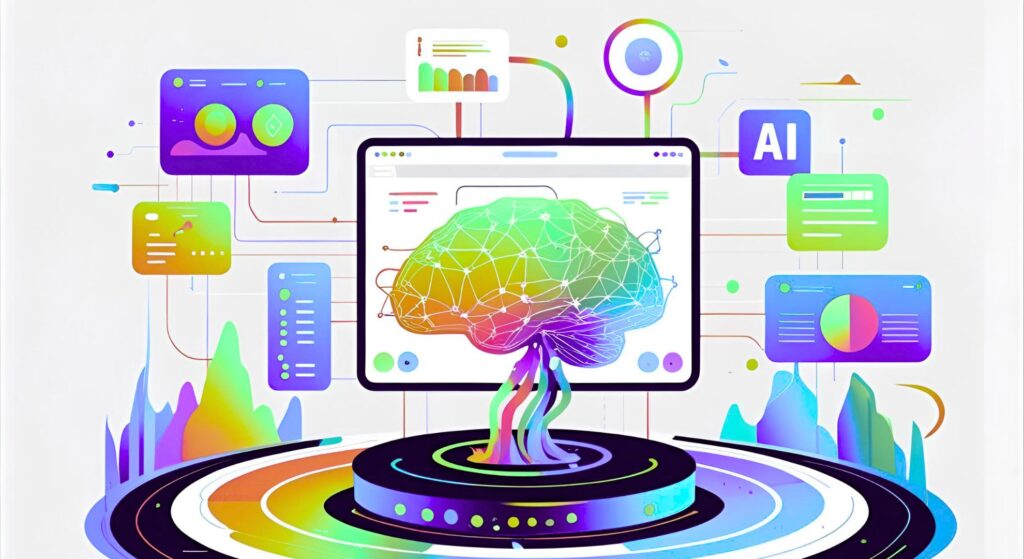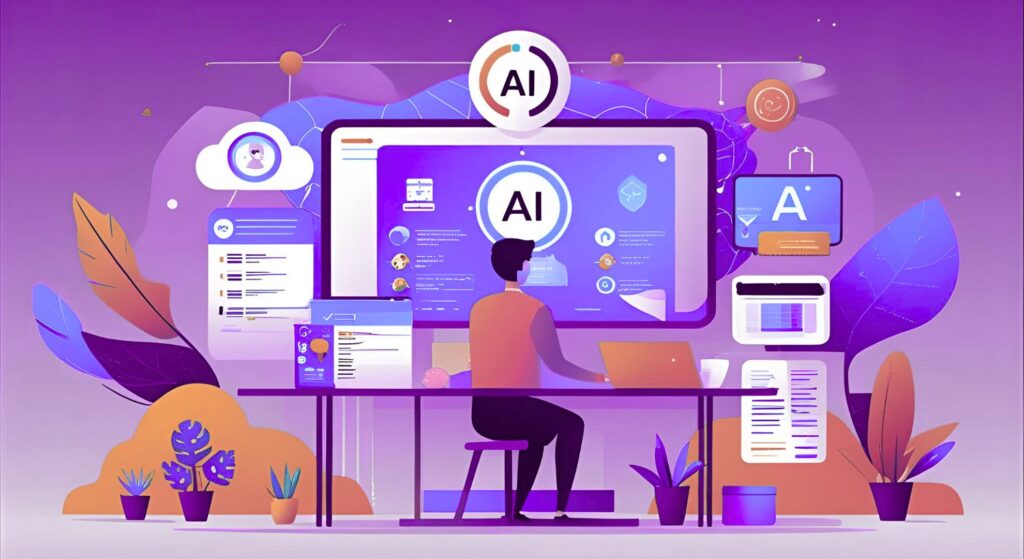AI algorithm updates has fundamentally transformed how search engines understand, process, and rank content, creating new challenges and opportunities for SEO professionals worldwide. Google’s integration of artificial intelligence through systems like RankBrain, BERT, and neural matching represents a paradigm shift from traditional keyword-based ranking algorithms to sophisticated understanding of user intent, context, and content quality. This evolution demands strategic adaptation of SEO methodologies that prioritize comprehensive topic coverage, natural language optimization, and user experience enhancement over traditional keyword density approaches.
The acceleration of machine learning implementation in search algorithms requires proactive preparation rather than reactive optimization, as these systems continuously evolve and adapt based on user behavior patterns and content performance data. Modern SEO success depends on understanding how machine learning algorithms evaluate content relevance, user satisfaction signals, and semantic relationships between topics and queries. Organizations that successfully adapt to these changes will gain sustainable competitive advantages through improved search visibility and user engagement metrics.
Key Takeaways
• Content depth and comprehensiveness have become critical ranking factors as machine learning algorithms prioritize content that thoroughly addresses user intent and provides complete topic coverage
• Natural language optimization replaces traditional keyword targeting as AI systems better understand context, synonyms, and semantic relationships within content
• User experience signals gain increased importance as machine learning algorithms analyze behavior patterns including dwell time, bounce rate, and engagement metrics to assess content quality
• Entity-based SEO emerges as a fundamental strategy for helping machine learning systems understand content topics, relationships, and authoritative coverage
• Predictive content strategy enables proactive optimization for emerging topics and search trends identified through machine learning pattern analysis
• Technical infrastructure optimization ensures websites can support machine learning evaluation through proper structured data, site architecture, and performance optimization
Overview
Successfully preparing for machine learning changes in search requires comprehensive strategy adaptation that addresses both immediate algorithm updates and long-term evolutionary trends. This guide examines proven approaches for optimizing content, technical infrastructure, and user experience elements that align with machine learning evaluation criteria. The methodology emphasizes sustainable optimization practices that improve search performance while building resilience against future algorithmic changes through focus on fundamental quality indicators and user value creation.
Understanding Machine Learning in Search Evolution
Machine learning algorithms fundamentally differ from traditional search ranking systems by continuously learning and adapting based on user interaction data rather than relying solely on predetermined ranking factors. Google’s RankBrain, introduced in 2015, marked the beginning of this transformation by using artificial intelligence to interpret search queries and match them with relevant content based on semantic understanding rather than exact keyword matching. This evolution enables search engines to understand context, intent, and meaning in ways that traditional algorithms could not achieve.

The complexity of modern machine learning systems like BERT (Bidirectional Encoder Representations from Transformers) enables search engines to understand the nuanced relationships between words within queries and content. BERT’s bidirectional processing analyzes word context from both directions within sentences, dramatically improving understanding of prepositions, conjunctions, and other connecting words that significantly impact meaning. This advancement particularly benefits long-tail and conversational queries where context determines relevance.
Neural matching represents another significant advancement that helps search engines understand synonyms, related concepts, and semantic relationships without requiring exact keyword matches. This technology enables Google to match queries with relevant content even when the specific search terms don’t appear in the content, focusing instead on conceptual relevance and topical alignment. Understanding these capabilities helps SEO professionals develop strategies that align with machine learning evaluation criteria.
Algorithm Learning and Adaptation Patterns
Machine learning algorithms continuously evolve based on user behavior feedback, making traditional SEO approaches less predictable and requiring more sophisticated optimization strategies. These systems analyze billions of search interactions to identify patterns that indicate content quality, relevance, and user satisfaction. Successful optimization requires understanding how these learning patterns influence ranking decisions and adapting strategies accordingly.
The feedback loops within machine learning systems mean that content performance data influences future ranking decisions, creating compounding effects for high-quality content that satisfies user intent effectively. This creates opportunities for sustained ranking improvements through consistent delivery of valuable user experiences that generate positive engagement signals.
Content Strategy Adaptation for AI Algorithms
Modern content strategy must prioritize comprehensive topic coverage and semantic richness over traditional keyword density optimization to align with machine learning evaluation criteria. Machine learning algorithms evaluate content depth by analyzing how thoroughly topics are covered, the logical flow of information, and the presence of supporting concepts that demonstrate expertise and authority. This requires developing content that addresses user intent completely rather than targeting specific keyword variations.
Entity-based content development helps machine learning systems understand topic relationships and expertise demonstration through strategic incorporation of relevant entities, concepts, and semantic connections. Content should naturally include related terms, supporting concepts, and authoritative references that establish topical comprehensiveness. This approach aligns with how machine learning algorithms evaluate content relevance and expertise within specific subject areas.
Natural language optimization focuses on creating content that reads naturally while incorporating semantic variations and conversational language patterns that machine learning systems recognize as high-quality. This includes using varied sentence structures, natural keyword variations, and contextually appropriate terminology that demonstrates expertise while maintaining readability and user engagement.
Topic Clustering and Semantic Optimization
Topic clustering strategies organize content around central themes with supporting subtopics that demonstrate comprehensive subject coverage. This approach helps machine learning algorithms understand content relationships while providing users with thorough information that satisfies complex search intents. Effective clustering requires identifying primary topics and developing supporting content that addresses related questions and concerns.
Semantic keyword research expands beyond traditional keyword analysis to include related concepts, synonyms, and contextual terms that machine learning algorithms associate with primary topics. This research informs content development that naturally incorporates semantic variations while maintaining focus on user value and intent satisfaction.
Technical Infrastructure Optimization
Technical SEO optimization for machine learning requires ensuring that websites provide clear signals about content structure, relationships, and purpose through proper implementation of structured data, site architecture, and performance optimization. Machine learning algorithms rely on these technical elements to understand content context and evaluate user experience quality effectively.
Structured data implementation becomes increasingly important as machine learning systems use this information to understand content entities, relationships, and context. Comprehensive schema markup helps algorithms categorize content accurately while enabling enhanced search result features that improve visibility and click-through rates. Strategic implementation should include relevant schema types that accurately describe content purpose and relationships.
Site architecture optimization ensures that machine learning algorithms can efficiently crawl, understand, and evaluate content relationships throughout websites. This includes logical URL structures, clear navigation hierarchies, and internal linking strategies that demonstrate content relationships and topical authority. Well-organized sites enable better algorithmic understanding while improving user experience and engagement metrics.
Core Web Vitals and Performance Optimization
Core Web Vitals optimization directly impacts machine learning evaluation as these metrics represent user experience quality indicators that algorithms use to assess content value. Page loading speed, interactivity, and visual stability contribute to user satisfaction signals that influence ranking decisions. Comprehensive optimization requires addressing both technical performance and user experience elements.
Mobile optimization ensures that machine learning algorithms evaluate content performance accurately across all devices, particularly given the mobile-first indexing approach used by major search engines. This includes responsive design implementation, mobile-specific performance optimization, and user experience enhancements that support positive engagement signals across device types.
User Experience and Behavioral Signal Optimization
Machine learning algorithms increasingly rely on user behavior signals to evaluate content quality and relevance, making user experience optimization critical for search performance. These signals include metrics like dwell time, bounce rate, click-through rates, and engagement patterns that indicate whether content successfully satisfies user intent. Optimization requires creating experiences that encourage positive user interactions and extended engagement.

Content engagement optimization focuses on creating compelling, valuable content that encourages users to spend time reading, exploring, and interacting with websites. This includes strategic use of multimedia elements, clear information hierarchy, and calls-to-action that guide users through logical content progressions. High engagement signals indicate to machine learning systems that content provides value and satisfies user needs effectively.
Navigation and user journey optimization ensures that visitors can easily find relevant information while encouraging exploration of related content. Clear navigation structures, related content recommendations, and logical information architecture support positive user experiences that generate favorable behavioral signals for machine learning evaluation.
Conversion and Engagement Enhancement
Conversion optimization aligned with user intent demonstrates content value through meaningful user actions including newsletter signups, contact form submissions, and content sharing. These conversion signals provide additional evidence of content quality and relevance that machine learning algorithms incorporate into ranking decisions.
Interactive elements and multimedia integration enhance user engagement while providing diverse content formats that appeal to different learning preferences and search intents. Strategic implementation of videos, infographics, interactive tools, and other engaging elements can improve behavioral signals while providing comprehensive topic coverage.
Predictive SEO and Trend Analysis
Predictive SEO leverages machine learning insights to identify emerging topics, search trends, and optimization opportunities before they become highly competitive. This proactive approach enables content development that captures early-stage search volume while building topical authority in developing market segments. Understanding predictive indicators helps organizations stay ahead of algorithmic changes and user behavior evolution.
Trend analysis using machine learning tools reveals patterns in search behavior, content performance, and competitive dynamics that inform strategic decision making. These insights enable optimization strategies that align with evolving user needs while positioning content for future search trends and algorithmic preferences.
Content gap analysis identifies topics and queries where comprehensive content could capture search traffic while addressing unmet user needs. Machine learning tools can analyze competitor content, search query data, and user behavior patterns to reveal optimization opportunities that traditional keyword research might miss.
Competitive Intelligence and Market Analysis
Machine learning-powered competitive analysis reveals strategic insights about competitor content strategies, performance trends, and optimization approaches that inform strategic planning. Understanding how competitors succeed or fail with machine learning algorithms provides guidance for differentiation strategies and optimization prioritization.
Market trend prediction using artificial intelligence helps identify emerging opportunities and potential algorithm changes that could impact search performance. This intelligence enables proactive strategy adjustments that maintain competitive advantages while adapting to evolving search landscapes.
Entity Optimization and Knowledge Graph Integration
Entity optimization helps machine learning algorithms understand content topics, relationships, and authority through strategic incorporation of recognized entities including people, places, organizations, and concepts. This approach aligns with how knowledge graphs organize information and influences how algorithms evaluate content relevance and expertise within specific domains.
Knowledge graph optimization involves creating content that clearly establishes entity relationships while demonstrating expertise and authority within relevant topic areas. This includes strategic mention of related entities, authoritative sources, and industry connections that help algorithms understand content context and credibility.
Local entity optimization becomes particularly important for businesses targeting geographic markets, requiring strategic incorporation of location-based entities, landmarks, and community connections that establish local relevance and authority. This approach supports both traditional local SEO objectives and machine learning evaluation of geographic relevance.
Authority Building and Expertise Demonstration
Expertise demonstration through comprehensive topic coverage, authoritative sources, and industry recognition helps machine learning algorithms identify content that deserves higher rankings based on quality and credibility indicators. This includes strategic incorporation of expert quotes, research citations, and industry data that establish content authority.
Authority building requires consistent creation of high-quality content that demonstrates deep subject knowledge while addressing user needs comprehensively. Machine learning algorithms recognize patterns of expertise through content depth, accuracy, and user engagement metrics that indicate valuable information provision.
Monitoring and Adaptation Strategies
Continuous monitoring of machine learning algorithm changes requires sophisticated tracking of ranking fluctuations, traffic patterns, and user behavior metrics that indicate algorithmic adjustments. Understanding these patterns enables rapid strategy adjustments that maintain search performance while adapting to evolving evaluation criteria.

Performance analysis should include both traditional SEO metrics and machine learning-specific indicators including user engagement signals, content comprehensiveness scores, and semantic relevance assessments. This comprehensive approach provides insights into how algorithms evaluate content while identifying optimization opportunities.
Algorithm update preparation involves maintaining flexible optimization strategies that can adapt quickly to machine learning system changes while focusing on fundamental quality indicators that remain consistent across updates. This includes emphasizing user value, content quality, and technical excellence that support long-term search success.
Testing and Optimization Methodologies
A/B testing approaches adapted for machine learning evaluation enable measurement of optimization impact on both traditional ranking factors and user behavior signals. These tests provide data about strategy effectiveness while informing future optimization decisions based on actual performance outcomes.
Continuous improvement processes ensure that optimization strategies evolve with machine learning algorithm changes while maintaining focus on user value and content quality. This includes regular content audits, technical performance assessments, and user experience evaluations that support sustained search success.
Future Trends and Preparation Strategies
Emerging machine learning technologies including advanced natural language processing, computer vision, and predictive analytics will continue transforming search algorithms and requiring adapted optimization strategies. Understanding these trends enables proactive preparation that positions organizations for continued search success as technologies evolve.
Voice search optimization becomes increasingly important as machine learning algorithms improve at understanding conversational queries and natural language patterns. This requires content optimization for question-based queries, local intent, and conversational language patterns that align with voice search behavior.
Visual search optimization represents an emerging opportunity as machine learning algorithms become more sophisticated at analyzing and understanding image content. This includes proper image optimization, alt text strategies, and visual content development that supports both traditional and visual search visibility.
Artificial Intelligence Integration
AI-powered content creation tools require strategic integration that maintains content quality while improving production efficiency. Understanding how to leverage these tools effectively while ensuring content meets machine learning algorithm quality standards becomes critical for sustainable optimization success.
Automation opportunities in SEO monitoring, analysis, and optimization enable more efficient strategy implementation while maintaining focus on high-value activities that require human expertise and creativity. Strategic automation supports scalable optimization efforts while preserving quality and strategic thinking.
Frequently Asked Questions
How do machine learning algorithms differ from traditional search ranking systems? Machine learning algorithms continuously learn and adapt based on user behavior data rather than relying solely on predetermined ranking factors. They understand context, intent, and semantic relationships, enabling better matching of search queries with relevant content based on meaning rather than exact keyword matches.
What content strategies work best for machine learning algorithm optimization? Effective strategies focus on comprehensive topic coverage, natural language optimization, and semantic richness rather than keyword density. Content should thoroughly address user intent while incorporating related concepts and entities that demonstrate expertise and authority within specific subject areas.
How important are user experience signals for machine learning SEO? User experience signals are increasingly critical as machine learning algorithms analyze behavior patterns including dwell time, bounce rate, and engagement metrics to assess content quality. Positive user interactions serve as strong indicators of content value and relevance for ranking decisions.
What technical optimizations support machine learning algorithm evaluation? Essential technical optimizations include comprehensive structured data implementation, Core Web Vitals optimization, mobile-first design, and clear site architecture. These elements help algorithms understand content context while ensuring positive user experiences that generate favorable behavioral signals.
How can businesses prepare for future machine learning algorithm changes? Preparation requires focusing on fundamental quality indicators including content comprehensiveness, user value creation, and technical excellence that remain consistent across algorithm updates. Continuous monitoring and flexible optimization strategies enable rapid adaptation to algorithmic changes.
What role does entity optimization play in machine learning SEO? Entity optimization helps algorithms understand content topics, relationships, and authority through strategic incorporation of recognized entities. This approach aligns with knowledge graph organization and influences how algorithms evaluate content relevance and expertise within specific domains.
How do predictive SEO strategies support machine learning optimization? Predictive strategies identify emerging topics and search trends before they become competitive, enabling proactive content development that captures early-stage search volume while building topical authority in developing market segments.
What metrics should businesses track for machine learning SEO performance? Important metrics include traditional SEO indicators plus user engagement signals, content comprehensiveness scores, semantic relevance assessments, and behavioral data. This comprehensive approach provides insights into how algorithms evaluate content while identifying optimization opportunities.
Sources
Machine Learning and AI in Search:
Algorithm Updates and Technical Implementation:
Content Strategy and Optimization:
- Google Quality Rater Guidelines
- Schema.org Documentation
- Natural Language Processing Research
User Experience and Behavioral Signals:
- Google Analytics Academy
- PageSpeed Insights
- User Experience Research
Industry Analysis and Trends:
- Search Engine Journal Machine Learning Coverage
- SEO Industry Studies
- Artificial Intelligence Research Publications
Future-proof your SEO strategy with machine learning optimization techniques that deliver sustainable search performance in an AI-driven landscape. Cloud 7 Agency specializes in developing comprehensive optimization strategies that align with machine learning algorithm evolution while building resilience against future changes through focus on quality, user value, and technical excellence. Contact our AI-focused SEO specialists today to discover how machine learning preparation can enhance your search visibility and competitive positioning for long-term success.

